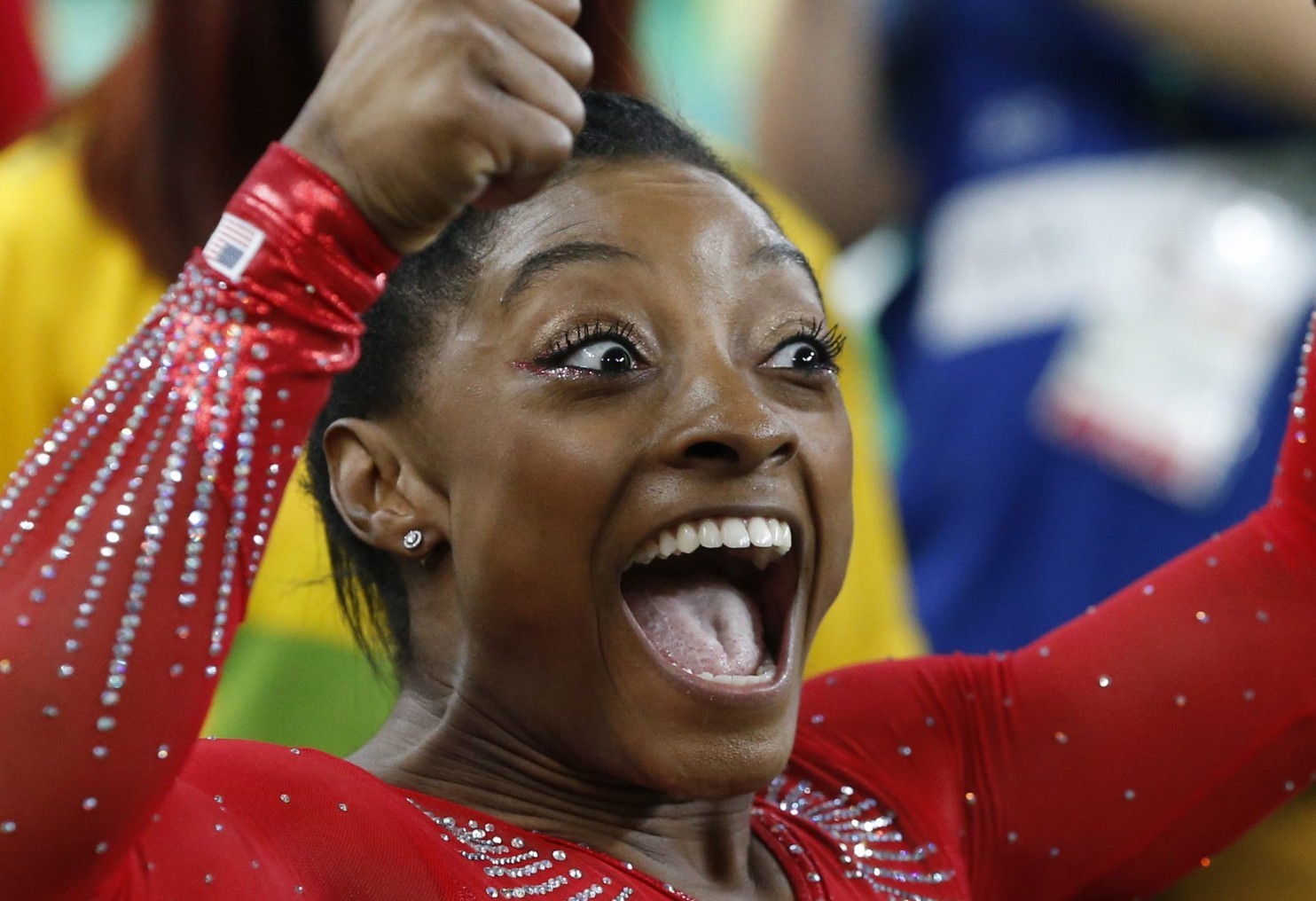
Simone Biles wins her third gold medal of Rio Games, crushing field in vault final
Liz Clarke

RIO DE JANEIRO — Almost from the time she could toddle, Simone Biles was getting in trouble for jumping and flipping around the living-room furniture. As a young teen, she was initially dismissed by veteran coach Martha Karolyi as “just this bouncy thing” — a girl with an uncanny knack for acrobatics but no sign of the discipline required for elite gymnastics.
Now 19, Biles has proven Karolyi wrong countless times since, much to the coach’s delight, winning three world all-around championships and, here at the Rio Olympics, leading the U.S. women to team gold and claiming the coveted individual all-around gold.
Sunday at Rio Olympic Arena, Biles collected a third gold in as many events — this one, on vault, the apparatus that most closely resembles the sofa and upholstered chairs that served as her launching pad so many years ago — outscoring her nearest competitor by 0.700 points.
That’s a staggering margin in gymnastics, and Biles earned it on two of the sport’s most difficult vaults — the Amanar and Chen — to finish with a score of 15.966. Russia’s Maria Paseka took silver (15.523) and Switzerland’s Giulia Steingrube claimed bronze (15.216).
[Simone Biles soars above the women’s gymnastics world to Olympic gold]
Gymnasts are required to perform two different vaults in the Olympic apparatus final, with the average of the two scores serving as their final mark.
And Biles, who had qualified for the eight-woman final with the highest qualifying score, was last to go, which gave her the benefit of knowing the mark to beat — Paseka’s 15.253.
Her two-and-half-twisting Amanar came first, earning 15.900. Biles could have easily opted for something safe after that, but followed with the even more difficult Chen. She earned even higher marks for that.
The vault rewards power and explosion; it’s not for long, lithe body types or the tiny sparrows of the sport. It’s well-suited to Biles, who is 4-feet-9 of solid muscle.
Finishing fourth was India’s Dipa Karmakar, who like the 41-year-old Oksana Chusovitina before her, attempted the so-called “vault of death,” which demands two-and-a-half somersaults. Neither landed it cleanly, resulting in costly deductions for execution of the risky move.
[In attempt to beat Simone Biles, 41-year-old Uzbek gymnast attempted the ‘vault of death’]
Sunday’s program opened with men’s floor exercise, with two Americans among the eight-man field, having qualified first and second. Within moments, the arena was filled with song and cheers as Brazil’s Diego Hypolito out-scored two-time Olympic all-around champion, Kohei Uchimura, as did fellow Brazilian Arthur Mariano.
Jake Dalton was the first American to compete and couldn’t stick a clean landing on his tumbling passes. His score (15.133) reflected it.
Four-time U.S. all-around champion Sam Mikulak, who’d posted the top floor-exercise score in qualifying, could hardly put a foot right. His was short on the landing of his opening tumbling pass, then stepped out of bounds on his second pass to finish last by a hefty margin (14.333).
[Simone Biles’s inevitable greatness is verified with a dazzling all-around gold]
Sunday’s event finals continue with pommel horse for men, followed by uneven bars for women. Alex Naddour is those lone American on pommel horse, while Gabby Douglas and Madison Kocian will vie for medals on the uneven bars.
Biles has two events remaining and is favored in both – the balance beam on Monday and floor exercise on Tuesday
SEE THE VIDEO
